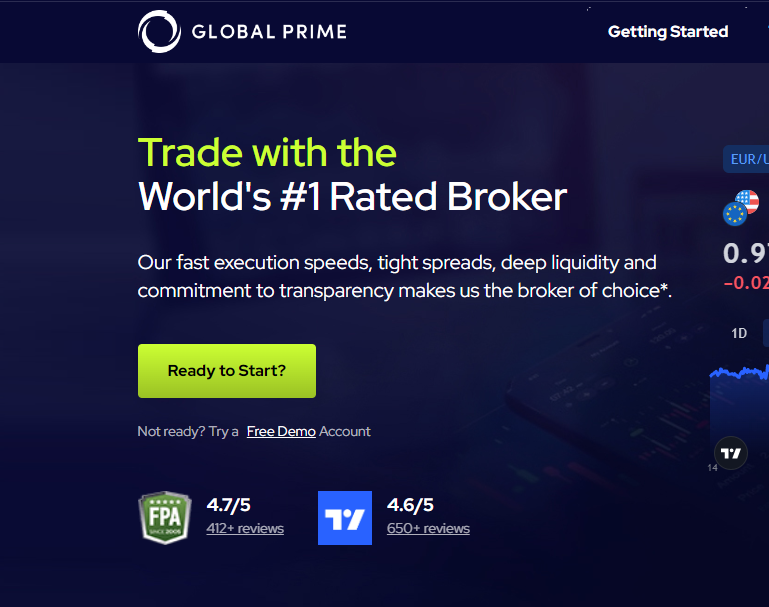A step-by-step guide on how to do Technical Analysis – For Traders and Investors…
If you’re a trader or an investor in the financial markets, you’ve likely heard the terms “fundamental analysis” and “technical analysis.” While both methods aim to help traders and investors make informed decisions about buying and selling assets, they approach the process differently.
In this post, we’ll focus on technical analysis. In doing so, we will highlight:
- What technical analysis is,
- The basics of technical analysis;
- Price Charts
- Types of Charts
- Support and Resistance Levels
- Identifying Trends
- What technical indicators are;
- Types of Technical Indicators
- 21 Commonly Used Technical Indicators
- 7 Steps to Conduct Technical Analysis,
- 7 Benefits of Technical Analysis,
- 7 Limitations of Technical Analysis,
- Technical vs Fundamental Analysis, and
- 10 Technical Analysis Software for Trading.
What is Technical Analysis?
When being explained to a 10-year-old…
Technical analysis is like being a detective who looks at how the price of something has changed over time. By looking at how the price has moved in the past, they can try to figure out if the price will go up or down in the future.
It’s like guessing if the price of a toy will be more or less expensive in a week based on how much it cost in the past. Just like how detectives use clues to solve a mystery, people who use technical analysis use past price movements as clues to help them make better decisions about buying or selling things.
When being explained to a professional trader/investor…
Technical analysis is a method of analyzing financial markets by studying past price and volume data to predict future price movements. This analysis involves using charts and technical indicators to identify trends, support and resistance levels, and potential trading opportunities.
Technical analysts believe that market trends, patterns, and behaviours repeat themselves over time, and use this information to make informed trading decisions. They use tools like moving averages, oscillators, and other technical indicators to help identify potential buy and sell signals.
One of the key advantages of technical analysis is that it helps traders identify entry and exit points in the market, and can be used in combination with other analysis methods, such as fundamental analysis, to develop a comprehensive trading strategy.
However, it’s important to remember that technical analysis is not a foolproof method and that there is always risk involved when trading in financial markets.
Basics of Technical Analysis
Price Charts
Price charts are the primary tool used in technical analysis to visualize past market data. A price chart shows the historical price movements of an asset over a specific period. Understanding how to read price charts is crucial to analyzing market trends and identifying potential trading opportunities.
Types of Charts
There are several types of price charts, including line charts, bar charts, and candlestick charts. Each chart type displays the price movements of an asset in a unique way. For example, a candlestick chart shows the opening, closing, high, and low prices of an asset in a single candlestick.
Understanding Support and Resistance Levels
Support and resistance levels are price levels where the market has historically shown buying or selling pressure. Support levels are price levels where the market has previously reversed from a downtrend and started to move upward. Resistance levels are price levels where the market has previously reversed from an uptrend and started to move downward.
Identifying Trends
Trends are the direction of the market price movements over a period. Identifying trends is a fundamental part of technical analysis as it helps traders and investors predict future price movements.
There are three types of trends: uptrend, downtrend, and sideways trend.
Uptrends occur when the price of an asset increases over time, downtrends occur when the price of an asset decreases over time, and sideways trends occur when the price of an asset moves within a narrow range. Traders use trendlines to identify trends on price charts.
Technical Indicators
Technical indicators are tools used by traders to analyze the past price and volume data of an asset and generate trading signals. These signals help traders identify potential buy or sell opportunities in the market.
Types of Technical Indicators
1. Leading indicators are used to predict future price movements and include tools like moving averages and oscillators.
2. Lagging indicators are used to confirm past price movements and include tools like the relative strength index (RSI) and moving averages.
Using Technical Indicators to Identify Buy and Sell Signals
Traders use technical indicators to identify buy and sell signals in the market. For example, if the price of an asset is trending upward, a trader might use a moving average crossover to identify a buy signal. Similarly, if the price of an asset is trending downward, a trader might use an oscillator like the RSI to identify a sell signal.
21 Commonly Used Technical Indicators
There are many technical indicators available to traders, but some of the most commonly used include:
1. Moving Averages: Used to identify trends and potential buy and sell signals. They are calculated by averaging the price of an asset over a specific period of time, and can be used to identify the direction of a trend and potential points of support and resistance.
2. Exponential Moving Averages: A type of moving average that places greater weight on more recent price data, making it more responsive to changes in the market.
3. Simple Moving Averages: A type of moving average that equally weighs all prices over a specified time period.
4. Relative Strength Index (RSI): Used to identify overbought and oversold conditions in the market. It measures the magnitude of recent price changes to evaluate overbought or oversold conditions in an asset.
5. Stochastic Oscillators: Used to identify overbought and oversold conditions in the market. They compare the current price of an asset to its price range over a certain time period to determine the momentum of the price movement.
6. Bollinger Bands: Used to identify potential support and resistance levels. They are calculated by creating a band of moving averages around the price of an asset, with the width of the band indicating the level of volatility in the market.
7. Average True Range (ATR): A measure of volatility that takes into account the size of price moves in an asset, regardless of the direction of the move.
8. On-Balance-Volume (OBV): Used to track the flow of volume in the market. It calculates a running total of the volume of an asset, with an upward trend indicating buying pressure and a downward trend indicating selling pressure.
9. Money Flow Index (MFI): Used to measure buying and selling pressure in the market. It takes into account both price and volume data to determine the strength of a trend.
10. Volume Weighted Average Price (VWAP): Used to track the average price of an asset over a specified time period, with the weight of each price point determined by the volume of trades at that price.
11. Fibonacci Retracements: Used to identify potential levels of support and resistance in the market based on key price levels derived from the Fibonacci sequence.
12. Ichimoku Clouds: A type of technical analysis that uses a combination of moving averages to identify potential support and resistance levels, as well as the strength and direction of a trend.
13. Chaikin Oscillator: Used to measure the momentum of an asset by comparing the accumulation/distribution line to a moving average of that line.
14. Williams %R: Used to identify potential overbought and oversold conditions in the market based on the closing price relative to the high-low range over a specified period of time.
15. Commodity Channel Index (CCI): Used to identify potential overbought and oversold conditions in the market based on the relationship between an asset’s price and its average price over a specified period of time.
16. Parabolic SAR: Used to identify potential trend reversals in the market. It places dots above or below the price of an asset to indicate potential changes in the direction of the trend.
17. Keltner Channels: Used to identify potential support and resistance levels in the market by creating a band of moving averages around the price of an asset.
18. Pivot Points: Used to identify potential levels of support and resistance in the market based on the high, low, and closing prices of the previous trading day.
19. Supertrend: Used to identify the direction of a trend and potential points of support and resistance by plotting a line above or below the price of an asset.
20. Heiken Ashi: Used to identify the direction of a trend by smoothing out price data to reduce noise and make trends more visible.
21. Donchian Channels: Used to identify potential support and resistance levels in the market based on the highest high and lowest low over a specified period.
Steps to Conduct Technical Analysis – For Traders and Investors
Steps 1 to Steps 5 have already been discussed in this article. You can scroll back up in case you need to recheck any.
Step 1. Understand the basics of technical analysis and its key principles, such as chart patterns, trends, support and resistance levels, and technical indicators.
Step 2. Gather data on the asset you want to analyze, including historical price data, trading volume, and other relevant information.
Step 3. Use a charting platform or software to create charts of the asset’s price movements over time. Choose a chart type that best fits your analysis goals, such as candlestick charts or line charts.
Step 4. Analyze price trends and patterns to identify potential buy and sell signals. Look for support and resistance levels, trend lines, and chart patterns, such as head and shoulders or double bottoms.
Step 5. Use technical indicators to confirm or supplement your analysis, such as moving averages, relative strength index (RSI), and stochastic oscillators. Look for overbought or oversold conditions and divergences between price movements and technical indicators.
Step 6. Risk Management: Set stop-loss orders to limit potential losses and use risk-to-reward ratios to assess the potential profitability of a trade.
Step 7. Backtest and optimize your trading strategies using historical data to improve their effectiveness. Whoa, you just did a technical analysis!
Benefits of Technical Analysis for Traders and Investors
- Helps identify trends and potential entry and exit points for trades.
- Provides objective data for making trading decisions.
- Can be used to forecast price movements based on historical patterns.
- Provides clear and easy-to-read charts and graphs for visual analysis.
- Can be used in conjunction with fundamental analysis for a more comprehensive view of the market.
- Can be applied to any asset class, including stocks, bonds, commodities, and currencies.
- Allows traders to identify potential risks and opportunities in the market.
Limitations of Technical Analysis for Traders and Investors
- Historical price data may not be indicative of future price movements.
- Technical analysis cannot account for unexpected events or news that may affect market prices.
- Technical analysis may not work well in markets with low trading volume or high volatility.
- Technical indicators can generate false signals or lag behind actual price movements.
- Technical analysis does not take into account fundamental factors, such as economic indicators or company financials.
- Technical analysis can be subjective and open to interpretation.
- Technical analysis requires skill and experience to use effectively, and novice traders may make mistakes.
Technical vs Fundamental Analysis
Technical Analysis involves studying past market data, such as price and volume charts, to identify patterns and trends that can help predict future price movements. Traders who use technical analysis typically look at charts and use various tools and indicators to help them make trading decisions.
Fundamental Analysis, on the other hand, involves examining a company’s financial health, economic and industry conditions, and management quality to determine its intrinsic value. Traders who use fundamental analysis typically look at financial statements, economic indicators, and industry trends to make informed investment decisions.
Both methods can be useful for traders, and some traders may use a combination of the two to make their decisions.
10 Technical Analysis Software for Trading and Investing
As provided on Money.com…
- E*Trade – Best for Zero Commissions
- TradeStation – Best for Combined Trading and Technical Analysis
- TrendSpider – Best Smart Technical Analysis Software
- Trade Ideas – Best for Day Traders
- TradingView – Best Free Trading Analysis Software
- Webull – Best for Intermediate and Advanced Traders
- Fidelity – Best Full-Service Brokerage Platform
- Lightspeed – Best for Frequent Traders
- TD Ameritrade – Best for Educational Tools
- Interactive Broker – Best for Research Tools
Recommended for Next Read







